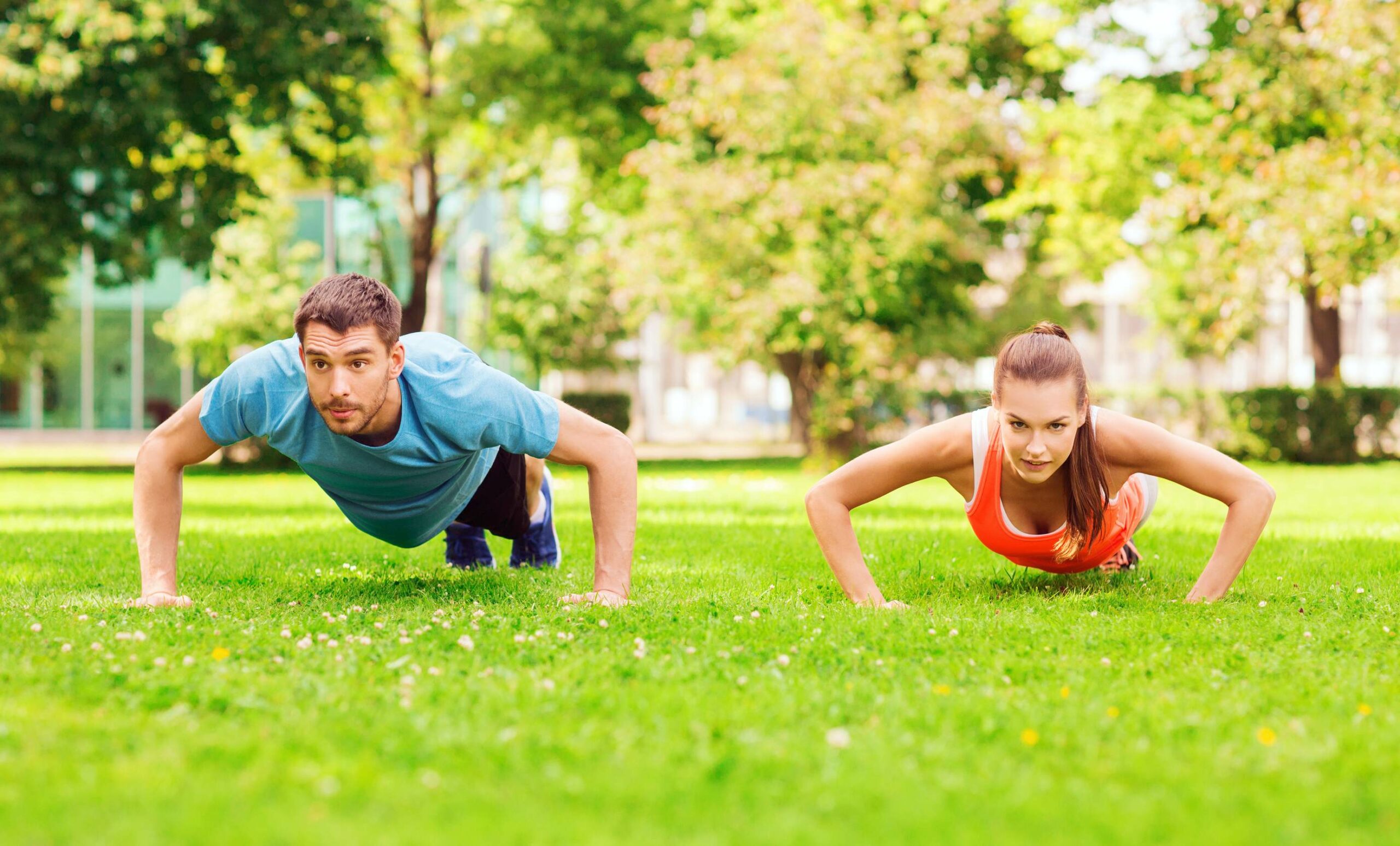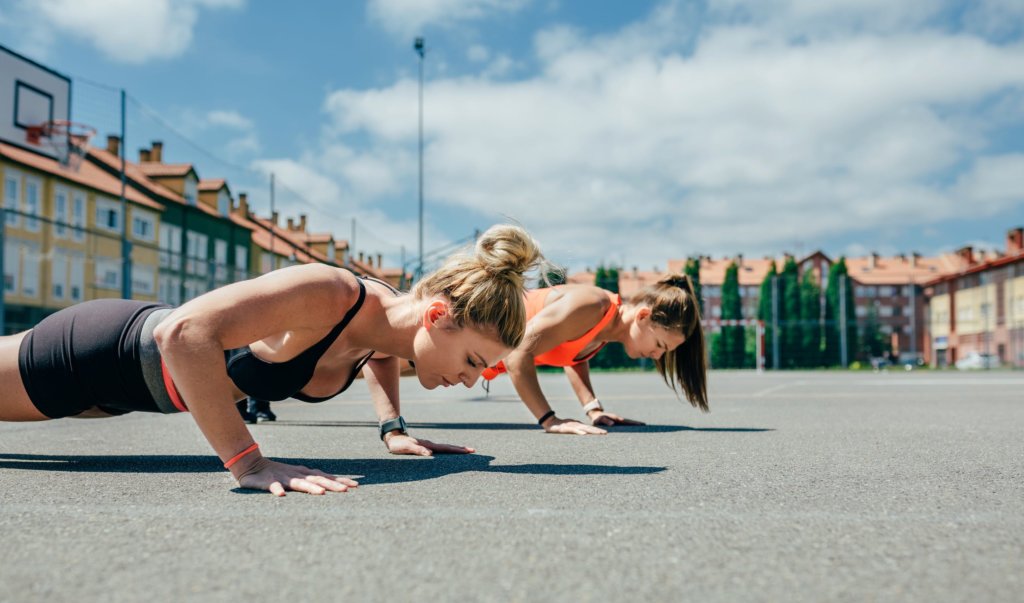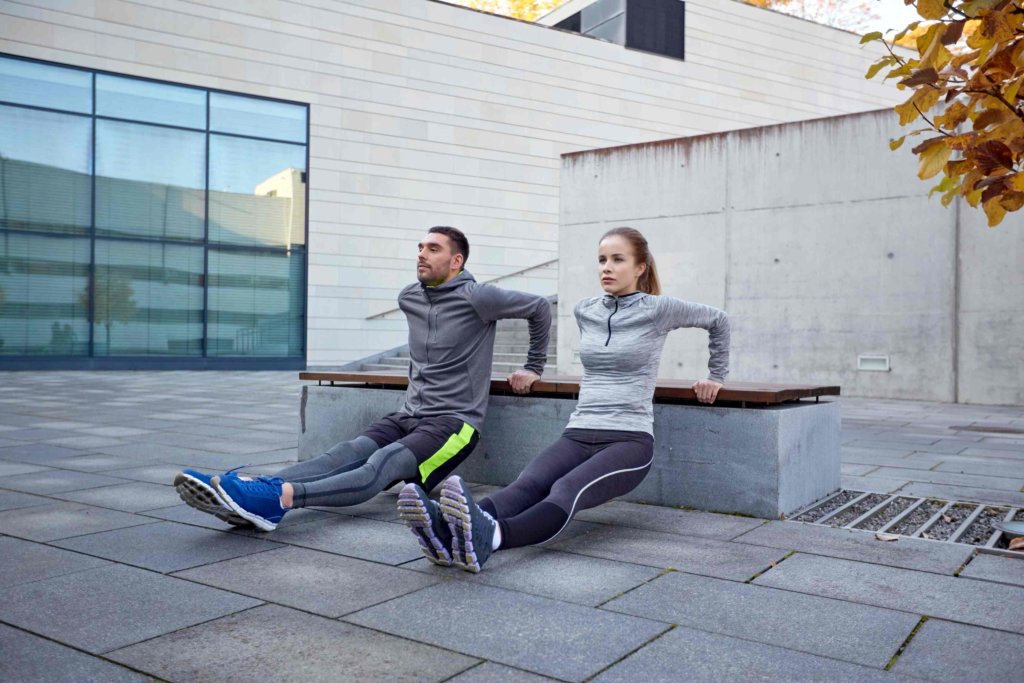The everywhere workout when time is short

You don’t always have much time for training. But that shouldn’t be an excuse. After all, by choosing the right exercises, you can get a short yet effective full-body workout almost anywhere and at any time. So here are my tips for your everywhere workout:
The everywhere workout for the whole body
The everywhere workout consists of only four exercises. Additional aids such as dumbbells or kettlebells are not necessary. You work with your body weight. Weather permitting, you are welcome to do the program outside. It is advantageous to warm up for a few minutes before the four exercises to get up to operating temperature. Here are the four exercises for your everywhere workout:
Squats
Squats are an effective exercise for the muscles of the middle and lower half of the body. These include the four-headed thigh muscle, the large gluteal muscle, and the ischiocrural muscles. In addition, the muscles of the lower back and the abdominal muscles are used as auxiliary muscles. How to perform squats correctly:
- Place your feet shoulder-width apart. Your toes point in the direction of 10 and 2 o’clock. Shift your weight to your heels and the outside of your feet.
- Pull your belly in and lower your hips parallel to the floor. Depending on your fitness level, you can go lower. Keeping your arms out in front of you will help you maintain your balance. Your spine will always maintain an S-shape.

Push-ups
A great full-body exercise that uses the following muscles: the pectoralis major, triceps, deltoid, and rotator cuff, as well as the core musculature. However, push-ups are technically quite demanding. Therefore, those not fit should first perform them in the more accessible variant on their knees. Otherwise, the technique looks like this:
- You place your hands shoulder-width apart on the floor. Your head, back, and legs are in a straight line and you look a little forward.
- Then lower in a controlled manner until the upper body almost touches the floor. Hold briefly and press back up in a controlled manner.

Backward lunges
With reverse lunges, you train the gluteal muscle, the ischiocrural muscles, the quadriceps, and a large part of the back muscles. They require good coordination. The shin plays a unique role. If possible, the knee should not extend beyond the toes. Because this leads to an extreme load on the knee. In addition, the quadriceps, which are usually strong anyway, then dominate.

Arnold dips
This exercise trains the arm muscles, especially the triceps and shoulder muscles. For Arnold dips, you need a bench, a sufficiently broad stool, or another stable elevation on which you can place your hands. This can also be a not-too-high wall outside. During the execution, you have to pay attention to the following things:
- You sit down with the front buttocks on the rise and place your hands shoulder-width apart. Your arms are almost fully extended.
- Your legs are bent at a 90-degree angle. Your feet are firmly planted. Then move your buttocks forward. Your upper body is upright, butt and abdominal muscles are tense.
- From this position, bend your arms to a 90-degree angle. Hold briefly and then press back up without fully extending your arms.
- Tip: The further your feet forward, the more complex the triceps press is during the Arnold dips.
